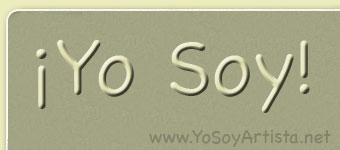
Hold That Note
Music is divided into equal parts called MEASURES.
Bar lines indicate the beginning and end of measures.

The distance between tw obar lines is called a measure.

TIME SIGNATURES are placed at the beginning of a piece of music. They contain two number that show the number of beats (or counts) in each measure and the kind of note that receives one beat.
 Then top number of beats (or counts) in each measure. The bottom number shows what kind of note gets one beat. The top 4 means four beats in each measure. The bottom 4 means a quater note gets one beat.
Then top number of beats (or counts) in each measure. The bottom number shows what kind of note gets one beat. The top 4 means four beats in each measure. The bottom 4 means a quater note gets one beat.
 A 'C' in the time signature stands for common time. It is the same as 4/4.
A 'C' in the time signature stands for common time. It is the same as 4/4.
 In 4/4 time, a whole note receives four beats.
In 4/4 time, a whole note receives four beats.
 A half note receives two beats.
A half note receives two beats.
 Aquater note receives one beat.
Aquater note receives one beat.
The time signature (also known as meter signature, metre signature, bar signature, or measure signature) is a notational convention used in Western musical notation to specify how many beats are in each measure and which note value constitutes one beat. In a musical score, the time signature appears at the beginning of the piece, as a time symbol or stacked numerals (such as or 3/4) (read "common time" and "three four time", respectively) immediately following the key signature (or immediately following the clef if the key signature is empty). A mid-score time signature, usually immediately following a barline, indicates a change of meter.
There are various types of time signatures, depending on whether the music follows simple rhythms or involves unusual shifting tempos, including: simple (such as 3/4 or 4/4), compound (e.g., 9/8 or 12/8), complex (e.g., 5/4 or 7/8), mixed (e.g., 5/8 & 3/8 or 6/8 or 3/4), additive (e.g., 3+2+3/8), fractional (e.g., 2½/4), irrational meters (e.g., 3/10 or 5/24), or other meters.
Rhythm (from Greek ῥυθμός—rhythmos, "any regular recurring motion, symmetry") generally means a "movement marked by the regulated succession of strong and weak elements, or of opposite or different conditions." This general meaning of regular recurrence or pattern in time can apply to a wide variety of cyclical natural phenomena having a periodicity or frequency of anything from microseconds to millions of years.
In the performance arts rhythm is the timing of events on a human scale; of musical sounds and silences, of the steps of a dance, or the meter of spoken language and poetry. Rhythm may also refer to visual presentation, as "timed movement through space." and a common language of pattern unites rhythm with geometry. In recent years, rhythm and meter have become an important area of research among music scholars. Recent work in these areas includes books by Maury Yeston, Fred Lerdahl and Ray Jackendoff, Jonathan Kramer, Christopher Hasty, Godfried Toussaint, William Rothstein, and Joel Lester.
Notational variations in simple time
A semicircle, or , is sometimes used for 4/4 time, also called common time or imperfect time. The symbol is derived from a broken circle used in music notation from the 14th through 16th centuries, where a full circle represented what today would be written in 3/2 or 3/4 time, and was called tempus perfectum (perfect time). The symbol , a "semicircle" with a vertical line through is also a carry-over from the notational practice of late-Medieval and Renaissance music, where it signified tempus imperfectum diminutum (diminished imperfect time)—more precisely, a doubling of the speed, or proportio dupla, in duple meter. In modern notation, it is used in place of 2/2 and is called "alla breve" or, colloquially, "cut time" or "cut common time".